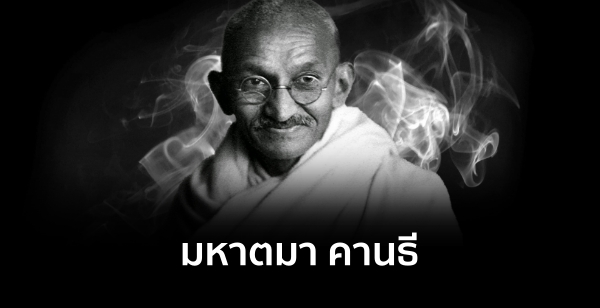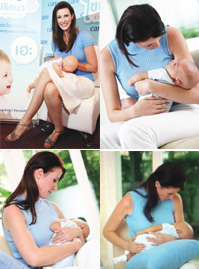บทคัดย่อ
การวิจัยรูปแบบการบริหารจัดการเรียนรู้ในศตวรรษที่ 21 อย่างมีความสุข โรงเรียนบ้านจำบอน จังหวัดเชียงราย ครั้งนี้ มีวัตถุประสงค์ 1) เพื่อศึกษาสภาพปัจจุบัน และความต้องการพัฒนารูปแบบ การบริหารจัดการเรียนรู้ในศตวรรษที่ 21 อย่างมีความสุข 2) เพื่อสร้างและประเมินรูปแบบการบริหารจัดการเรียนรู้ในศตวรรษที่ 21 อย่างมีความสุข และ 3) เพื่อศึกษาผลการใช้รูปแบบการบริหารจัดการเรียนรู้ในศตวรรษที่ 21 อย่างมีความสุข การวิจัยครั้งนี้ ใช้รูปแบบวิธีการวิจัยแบบผสมผสาน (Mixed Methods Research : MMR) ดำเนินการวิจัย 3 ระยะ คือ ระยะที่ 1 การศึกษาสภาพปัจจุบันและความต้องการพัฒนารูปแบบการบริหารจัดการเรียนรู้ในศตวรรษที่ 21 อย่างมีความสุข ระยะที่ 2 การสร้างและประเมินรูปแบบการบริหารจัดการเรียนรู้ในศตวรรษที่ 21 อย่างมีความสุข และระยะที่ 3 การศึกษาผลการใช้รูปแบบการบริหารจัดการเรียนรู้ ในศตวรรษที่ 21 อย่างมีความสุข ประชากรประกอบด้วย ผู้ทรงคุณวุฒิ คณะกรรมการสถานศึกษาขั้นพื้นฐาน ครู ผู้ปกครองและนักเรียน ทั้งหมด จำนวน 261 คน เครื่องมือที่ใช้ประกอบด้วยแบบสัมภาษณ์ แบบสำรวจ ประเด็นการสนทนากลุ่ม และแบบประเมิน สถิติที่ใช้ ได้แก่ ร้อยละ ค่าเฉลี่ยและค่าเบี่ยงเบนมาตรฐาน
ผลการวิจัยพบว่า
1. ผลการศึกษาสภาพปัจจุบัน และความต้องการพัฒนารูปแบบการบริหารจัดการเรียนรู้ในศตวรรษที่ 21 อย่างมีความสุข พบว่า 1) สภาพปัจจุบัน การบริหารจัดการเรียนรู้ โดยรวมอยู่ในระดับปานกลางทุกด้าน ( = 3.23, = 0.62) และ 2) ความต้องการพัฒนารูปแบบการบริหารจัดการเรียนรู้ในศตวรรษที่ 21 อย่างมีความสุข ประกอบด้วย 5 ด้าน คือ 1) ด้านการนำองค์กร 2) ด้านระบบนิเวศการศึกษา 3) ด้านการจัดการเรียนรู้แบบเผชิญสถานการณ์จริง 4) ด้านนวัตกรรมการเรียนรู้และพัฒนา และ 5) ด้านธรรมาภิบาล อยู่ในระดับมากที่สุด ( = 4.76, = 0.44)
2. ผลการสร้างและประเมินรูปแบบการบริหารจัดการเรียนรู้ในศตวรรษที่ 21 อย่างมีความสุข พบว่า 1) รูปแบบการบริหารจัดการเรียนรู้ในศตวรรษที่ 21 อย่างมีความสุข มี 8 องค์ประกอบได้แก่ (1) ชื่อ (2) หลักการ (3) วัตถุประสงค์ (4) กระบวนการ (5) ผลผลิต (6) ผลลัพธ์ (7) ผลกระทบ และ(8) ข้อมูลย้อนกลับ และ 2) ผลการประเมิน ด้านความถูกต้อง ด้านความเหมาะสม ด้านความเป็นไปได้ และด้านความเป็นประโยชน์ของรูปแบบ โดยผู้ทรงคุณวุฒิ ภาพรวมอยู่ในระดับ มากที่สุด ( = 4.84, = 0.14)
3. ผลการศึกษาการใช้รูปแบบการบริหารจัดการเรียนรู้ในศตวรรษที่ 21 อย่างมีความสุข ในปีการศึกษา 2563 และปีการศึกษา 2564 โดยปรับเพิ่มปัจจัยแห่งความสำเร็จ (Key Success Factor : KFS) พบว่า
3.1 ผลผลิต (Outputs)
1) ผลการพัฒนาอัตลักษณ์ผู้เรียนด้านยิ้มง่าย และไหว้สวย นักเรียนผ่านเกณฑ์ในระดับดี-ดีมาก ปีการศึกษา 2563 ร้อยละ 62.22 และปีการศึกษา 2564 ร้อยละ 84.84
2) ผลการประเมินคุณภาพภายใน (Internal Quality Assurance) ปีการศึกษา 2563 และ ปีการศึกษา 2564 พบว่า
(1) ปีการศึกษา 2563 ระดับปฐมวัย มาตรฐานที่ 1 คุณภาพของเด็ก อยู่ในระดับยอดเยี่ยม (คะแนนเฉลี่ย 93.10 คะแนน) มาตรฐานที่ 2 กระบวนการบริหารและการจัดการ อยู่ในระดับดีเลิศ (คะแนนเฉลี่ย 87.50 คะแนน) และมาตรฐานที่ 3 การจัดประสบการณ์ที่เน้นเด็กเป็นสำคัญ อยู่ในระดับดีเลิศ (คะแนนเฉลี่ย 86.75 คะแนน) และระดับการศึกษาขั้นพื้นฐาน มาตรฐานที่ 1 คุณภาพของผู้เรียน อยู่ในระดับดี(คะแนนเฉลี่ย 75.01 คะแนน) มาตรฐานที่ 2 กระบวนการบริหารและการจัดการ อยู่ในระดับดีเลิศ (คะแนนเฉลี่ย 86.95 คะแนน) และมาตรฐานที่ 3 กระบวนการจัดการเรียนการสอนที่เน้นผู้เรียนเป็นสำคัญ อยู่ในระดับดี (คะแนนเฉลี่ย 73.60 คะแนน)
(2) ปีการศึกษา 2564 ระดับปฐมวัย มาตรฐานที่ 1 คุณภาพของเด็ก อยู่ในระดับยอดเยี่ยม (คะแนนเฉลี่ย 90.75 คะแนน) มาตรฐานที่ 2 กระบวนการบริหารและการจัดการ อยู่ในระดับยอดเยี่ยม (คะแนนเฉลี่ย 94.33 คะแนน) และมาตรฐานที่ 3 การจัดประสบการณ์ที่เน้นเด็กเป็นสำคัญ อยู่ในระดับยอดเยี่ยม (คะแนนเฉลี่ย 94.83 คะแนน) และระดับการศึกษาขั้นพื้นฐาน มาตรฐานที่ 1 คุณภาพของผู้เรียน อยู่ในระดับยอดเยี่ยม (คะแนนเฉลี่ย 92.60 คะแนน) มาตรฐานที่ 2 กระบวนการบริหารและการจัดการ อยู่ในระดับยอดเยี่ยม (คะแนนเฉลี่ย 94.50 คะแนน) และมาตราที่ 3 กระบวนการจัดการเรียนการสอนที่เน้นผู้เรียนเป็นสำคัญ อยู่ในระดับยอดเยี่ยม (คะแนนเฉลี่ย 92.20 คะแนน)
3.2 ผลลัพธ์ (Outcomes) ระดับความพึงพอใจการใช้รูปแบบการบริหารจัดการเรียนรู้ในศตวรรษที่ 21 อย่างมีความสุข ปีการศึกษา 2563 ภาพรวมอยู่ในระดับ มากที่สุด ( = 4.39, = 0.38) และ ปีการศึกษา 2564 ภาพรวมอยู่ในระดับ มากที่สุด ( = 4.55 , = 0.64) โดยมีค่าเฉลี่ยความพึงพอใจเพิ่มขึ้น ร้อยละ 4.60 จากปีการศึกษา 2563
3.3 ผลกระทบ (Impact) จากการสำเร็จการใช้รูปแบบการบริหารจัดการเรียนรู้ในศตวรรษที่ 21 อย่างมีความสุข สร้างการยอมรับ ความภาคภูมิใจ และการเข้ามามีส่วนร่วมการบริหารจัดการเรียนรู้ของทุกภาคส่วนในรูปพันธมิตรการศึกษา (Educational Partnership)
คำสำคัญ : รูปแบบ, การบริหารจัดการเรียนรู้ ,ความสุข
Abstract
Model of happiness learning management in the 21st century of BanChambon School Chiang Rai Province. The purposes of this research were to 1) study the current conditions and the need to develop a model 2) create and evaluate a model of happiness learning management in the 21st century, and 3) study the effects of using the happiness learning management model in the 21st century. This research was used Mixed Methods Research (MMR) with 3 phases. The first was a study of current conditions and the need to develop a model. The second was creating and evaluating a model. The third was a study of the effects of using the model. The population consists of experts in basic education, school board, teachers, parents, and students, a total of 261 people. An interview form, survey, group discussion, and evaluation form were used for collecting data. The statistics were used percentage, mean and standard deviation.
The results of this research were as follows:
1. The results of a study of the present conditions and the need to develop a model of happiness learning management in the 21st century found that 1) the current conditions of learning management. The overall was at a moderate level in all aspects ( = 3.23, = 0.62) and 2) the need to develop a model, consisting of 5 aspects: (1) organizational leadership (2) educational ecosystem, (3) face-to-face learning management, (4) learning innovation and development, and (5) good governance. There were at the highest level ( = 4.76, = 0.44).
2. The results of creating and evaluating a model found that 1) The model of happiness learning management in the 21st century has 8 components: (1) Name (2) Principles (3) Objectives (4) Processes (5) Output (6) Results (7) Impacts and (8) Feedback and 2) The evaluation for accuracy, suitability, possibility, and benefits of the model by experts, the overall was at the highest level ( = 4.84, = 0.14).
3. The results of a study on implementing the model in the academic year 2020 and 2021 by increasing the Key Success Factor (KFS) found that:
3.1 Outputs
1) The results of the development of student identity in terms of smiling easily and paying respect, passing the criteria at a good-very good level, in the academic year 2020 was 62.22% and in the academic year 2021 was 84.84%.
2) The results of the Internal Quality Assurance for the academic year 2020 and the academic year 2021 found that:
(1) The academic year 2020, Early Childhood Level, Standard 1, child quality was at an excellent level (average score 93.10). Standard 2, administrative and management processes were at an excellent level (average score of 87.50). and Standard 3, child-centered experiences were at an excellent level (average score 86.75 points). Regarding the level of basic education, Standard 1, the quality of learners was at a good level (average score 75.01). Standard 2, administrative and management processes were at an excellent level (average score of 86.95 points), and Standard 3, the teaching and learning process that focuses on the learner is important was at a good level (average score 73.60 points).
(2) The academic year 2021, Early Childhood Level, Standard 1, child quality was at an excellent level (average score 90.75). Standard 2, administrative and management processes were at an excellent level (average score of 94.33), and Standard 3, child-centered experiences. were at an excellent level (average score of 94.83). Regarding the level of basic education, Standard 1, the quality of learners was at an excellent level (average score 92.60). Standard 2, administrative and management processes were at an excellent level (average score of 94.50). and standard 3, the teaching and learning process that focuses on the learner is important were at an excellent level (average score 92.20).
3.2 Outcomes, the level of satisfaction of implementing model, in the academic year 2020, the overall was at the highest level ( = 4.39, = 0.38) and the academic year 2021, the overall was at the highest level ( = 4.55 , = 0.64) with an average satisfaction was an increase of 4.60% from the 2020 academic year.
3.3 Impact from the successful implementation of the model build acceptance pride and participation in learning management of all sectors in the form of education partnerships.
Keywords: model development, learning management, happiness



 ค้นหาทุกอย่างในเว็บครูบ้านนอก :
ค้นหาทุกอย่างในเว็บครูบ้านนอก :































